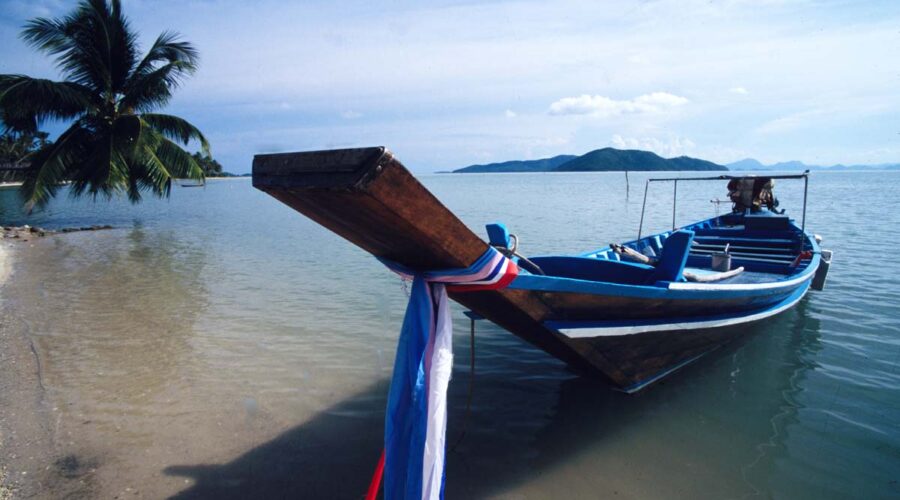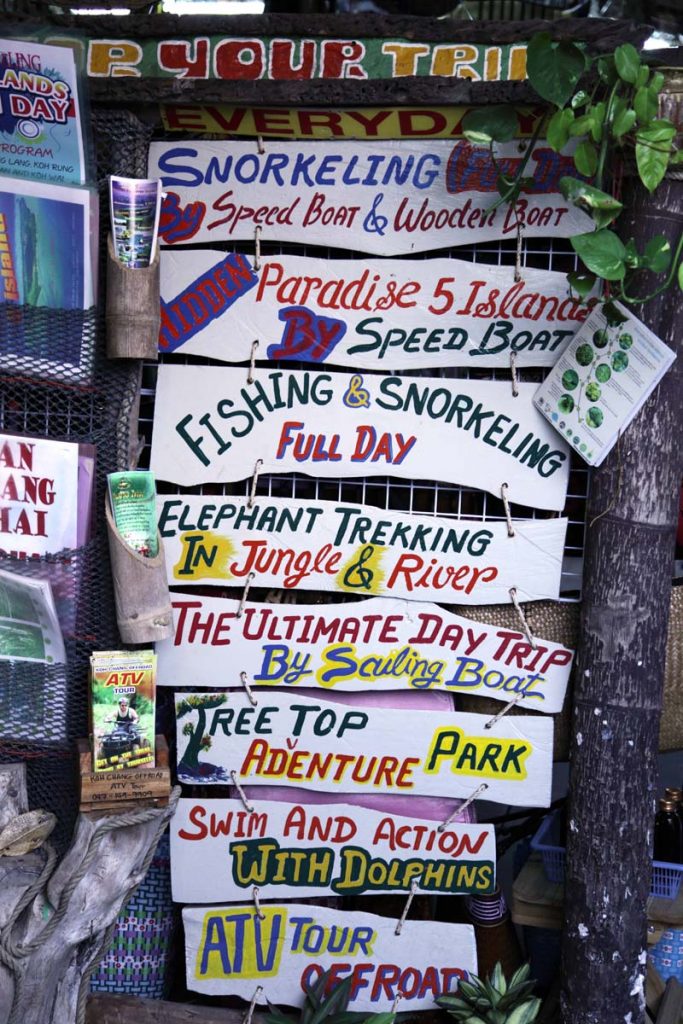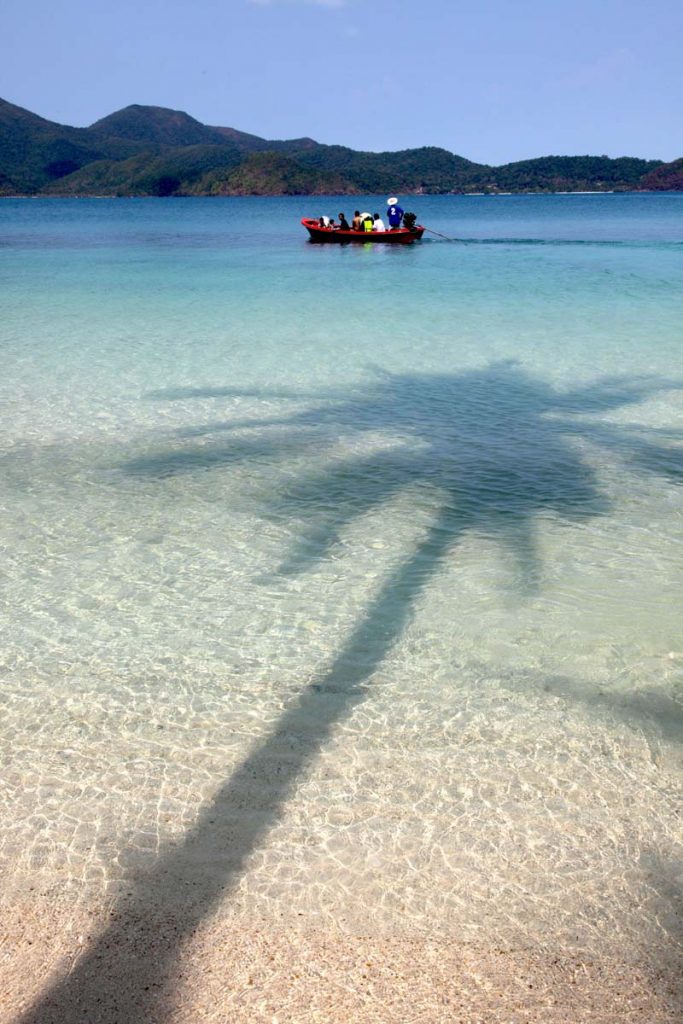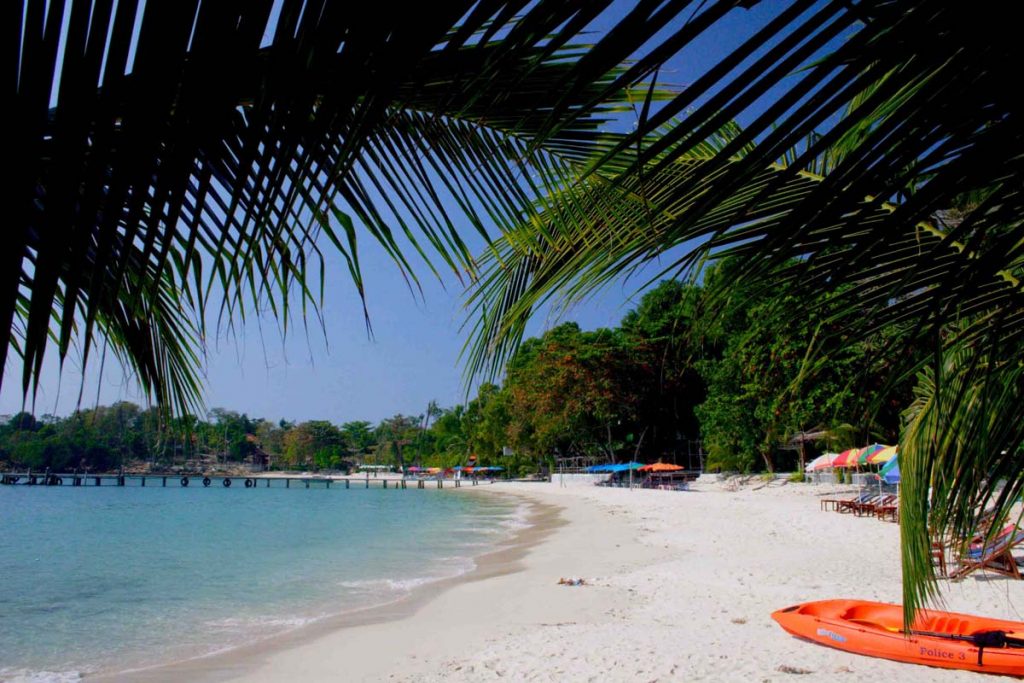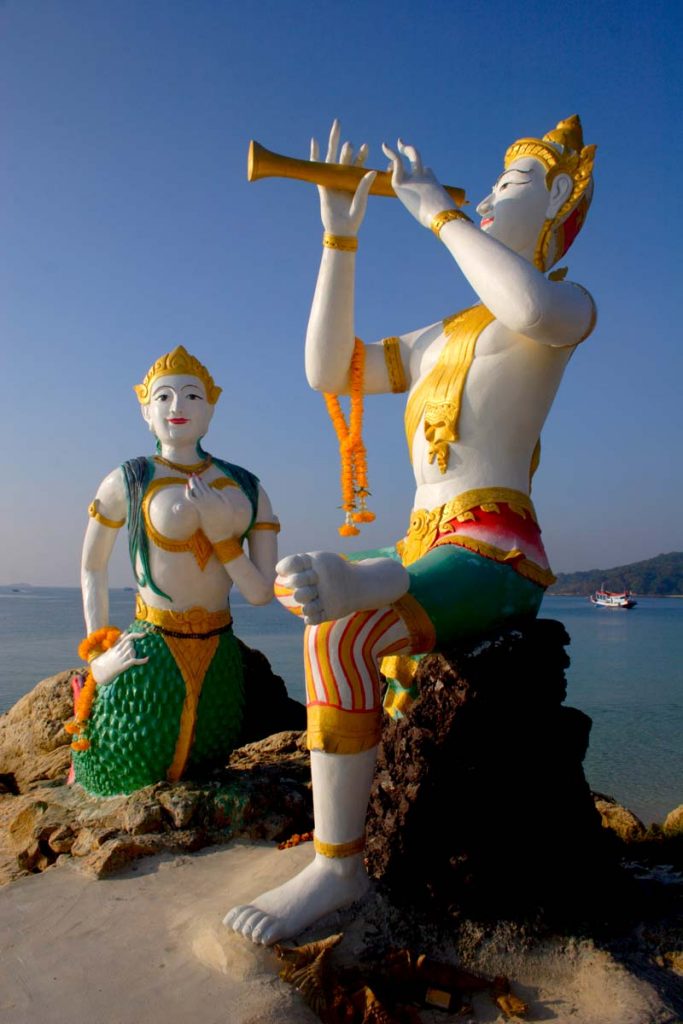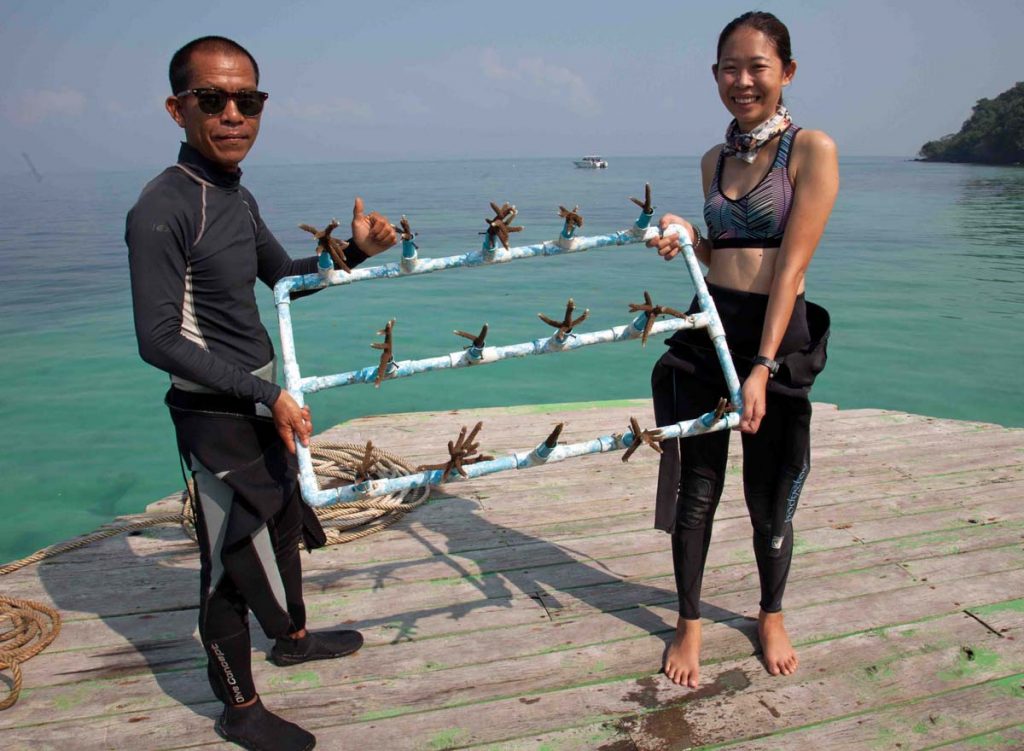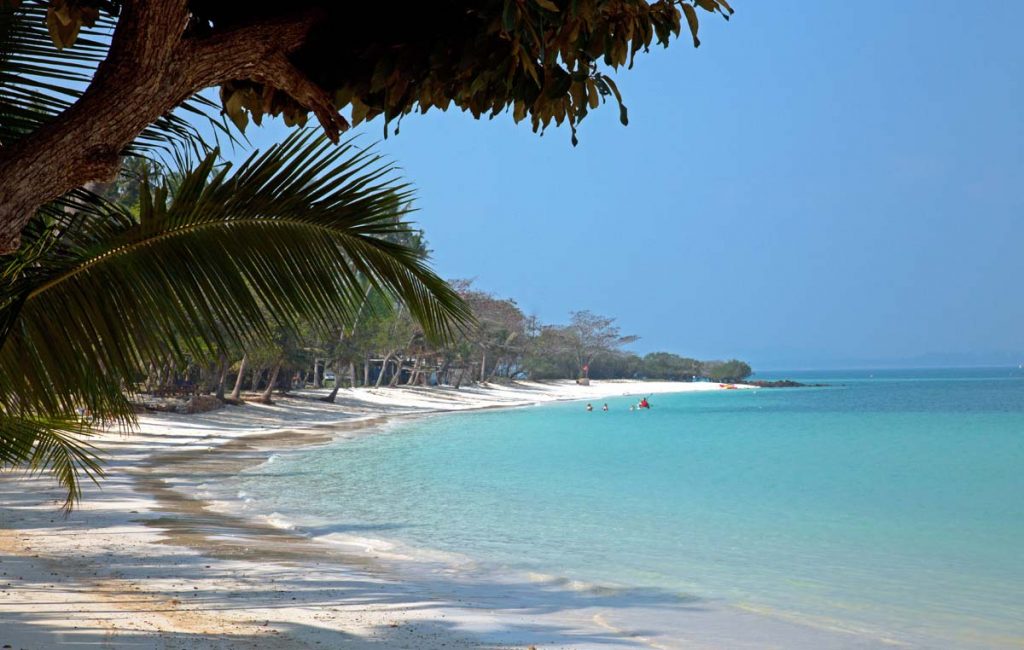Islands in the Dream – Amazing Thailand
Thailand has hundreds of islands. Guest blogger John Borthwick focuses on those in the beautiful Gulf of Thailand and goes island-hopping.
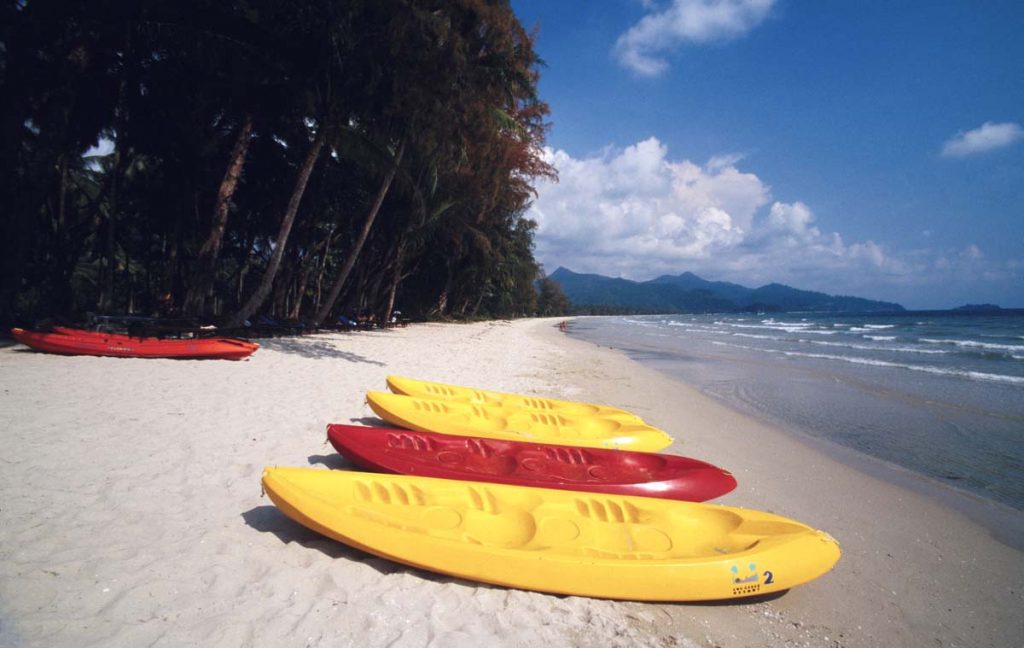
Koh Chang (Elephant Island) is the Kingdom’s second largest island and while increasingly popular, still has plenty of jungle and sandy coves. Its White Sand Beach (Hat Sai Khao) is the main place for a seafood-eating, novel-reading, hair-braiding sort of holiday, while other places like Bang Bao and Klong Prao offer a more local flavour.
Much of the west coast was rapidly and unsympathetically developed so, if you’re looking for peace and quiet, there are 47 islands in the Koh Chang National Park group, although most do not offer accommodation. Koh Chang has good restaurants, cheap shopping and massages galore.
Koh Kood in thefar easternKoh Chang Archipelago is Thailand’s fourth-largest island. Its range of resorts is limited but the quality is good, including at Cham’s House, Peter Pan and Soneva Kiri (about as far up-market as one can go without needing oxygen). Koh Kood’s sands haven’t been hived off to beach umbrellas or its taxis to extortionists. There’s great diving offshore and snorkeling, plus some river kayaking. In general, on untrammeled, jungle-clad Koh Kood there’s not that much to do for visitors who love to do not that much.
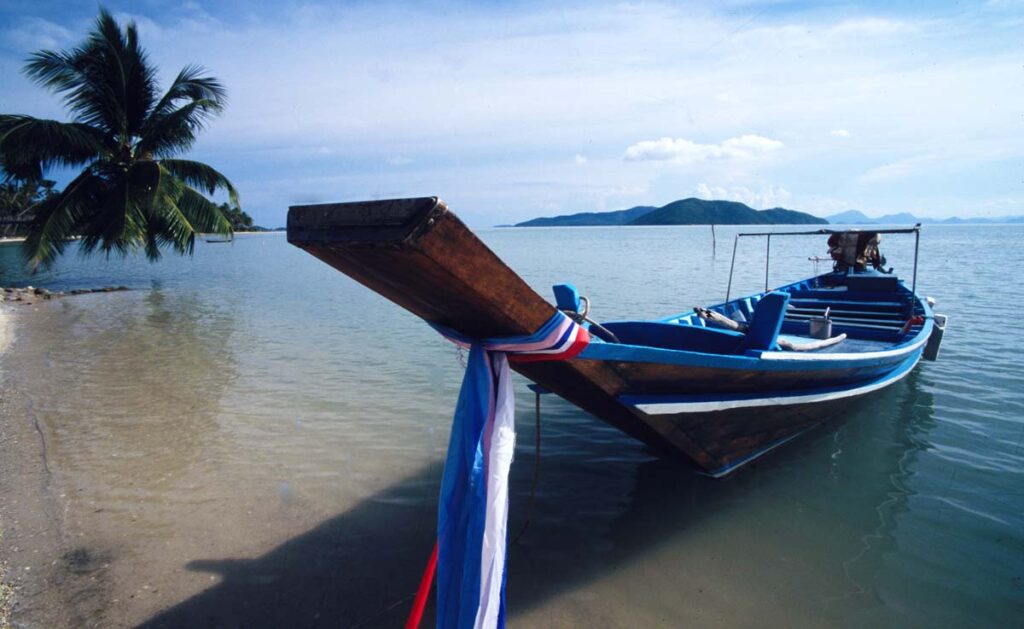
Koh Phangan, 15 km north of Koh Samui, was once known mostly for its full-moon raves at Hat Rin beach. Then came half-moon and no-moon parties. In their wake a number of resorts of growing sophistication have made the island more than a backpacker haunt. There are now several hundred accommodation options, ranging from bungalows to luxury pool suites. “Try getting away from Hat Rin. It’s no more Phangan than Bangkok is Thailand,” wisely advises one blogger. Following that suggestion, other Phangan beaches like Hat Mae, Hat Yao and Hat Sadet still deliver the kicked-back, siesta’d-out stay you’ve dreamed of.
Koh Samet, only a half-day drive southeast from Bangkok could be, you might fear, somewhat over-paved and raved-up but, on the contrary, this forested national park island off Rayong still has tranquil beaches and a reasonably low-key tourist scene. Much accommodation is in bungalow-style resorts, plus select upmarket retreats. The fun include beach combing, beach dining (with fire-dancers) and swimming. Weekdays feel like a siesta while weekends are busier with Bangkok escapees. Samet (aka Ko Samed) embodies a Thai-style contradiction in being both a ”protected” National Park and intensively developed with resorts, particularly along the eastern beaches like Hat Sai Kaew.

Koh Samui saw its first tourists 50 years ago. With no accommodation they hadto sleep in the temple. Today, this tourist magnet in the western sector of the Gulf (off Surat Thani) hosts millions of visitors a year.
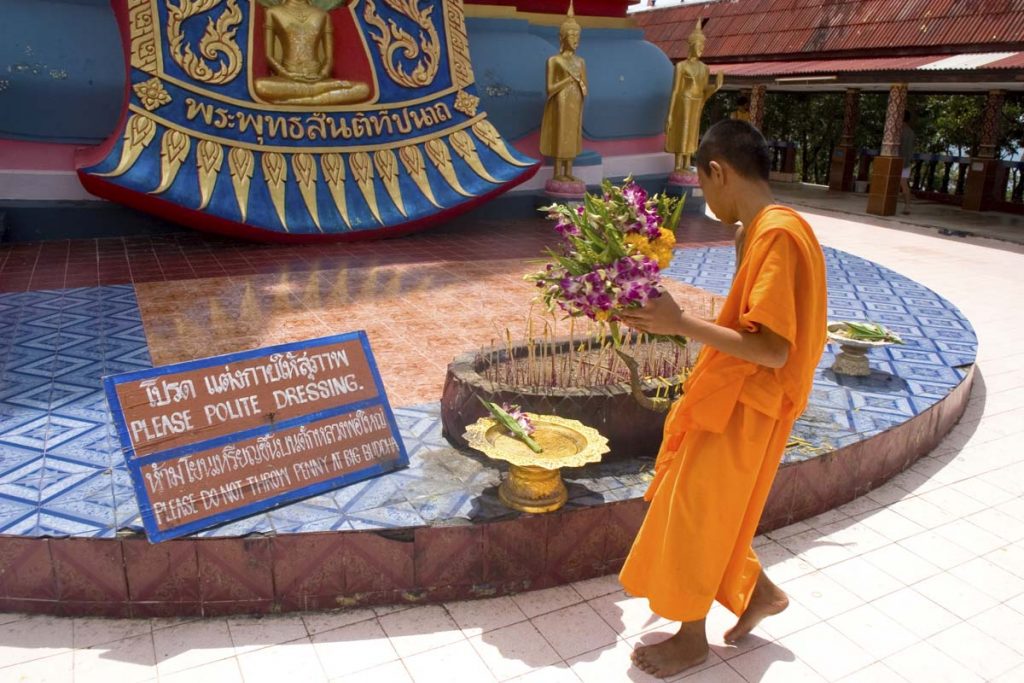
There are two faces to its development: the teeming pub-and-club strips at Chaweng and Lamai beaches, and a growing number of exclusive resorts. Tex-Mex restaurants, Swiss pubs and dive shops confirm that you are in modern Thailand, but a rugged jungle interior and a chain of west coast beaches (best at high tide) are your getaway zones on this 25 km long island.
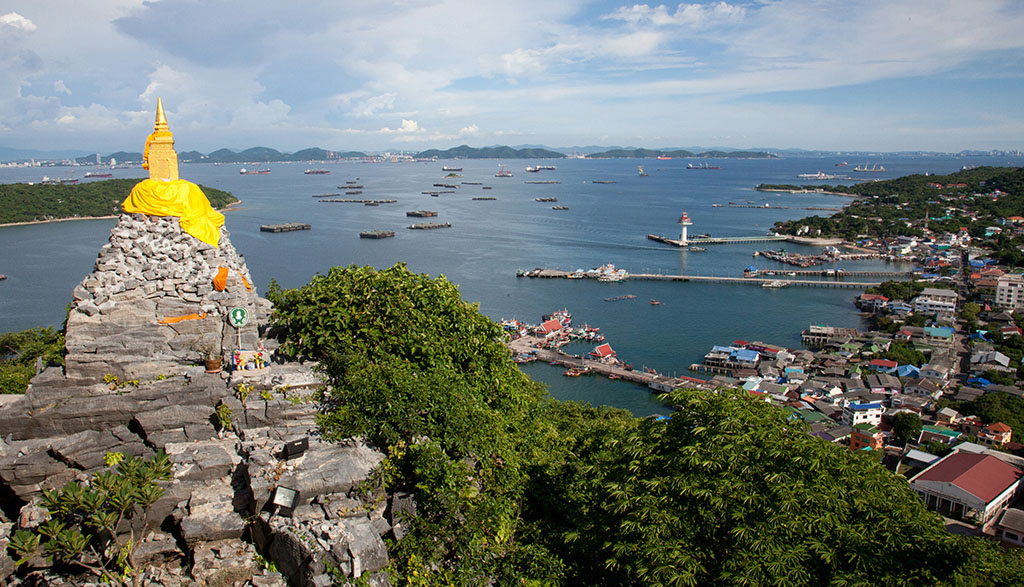
Koh Si Chang, 120 km from Bangkok, was a favoured escape for Siam’s royals in the 19th century. Today you can wander the beautiful terraced parklands gardens remaining around the former Chudhadhuj Rajthan palace. Despite the closeness to Bangkok, there is no forest of glitzy resorts here. Si Chang was “saved” from becoming a tourist purgatory by its lack of spectacular beaches. There are no cars, so hire a motorbike to orbit this craggy island. Head up to the white “Buddha Footprint” temple overlooking the island and sea. Dine or have coffee in town or a sunset beer at Chong Khao Khad viewpoint.
Koh Talu in the southwestern waters of Gulf has just one resort, clean sands, plenty of palms and no neons. The 1500-ha island sits on the “the sunrise side” of the Gulf, 370 km south of Bangkok. The comfortable, Thai-style bungalows of Koh Talu Island Resort overlook the long white sands of Big Bay and the smaller, absurdly pretty Ao Muk (Pearl Bay). The “might-do’s” of your day include snorkeling, kayaking, a bushwalk and then cocktails. To get there, travel 160 km by train or road south from Hua Hin to Bang Saphan and then take the resort ferry to the island.
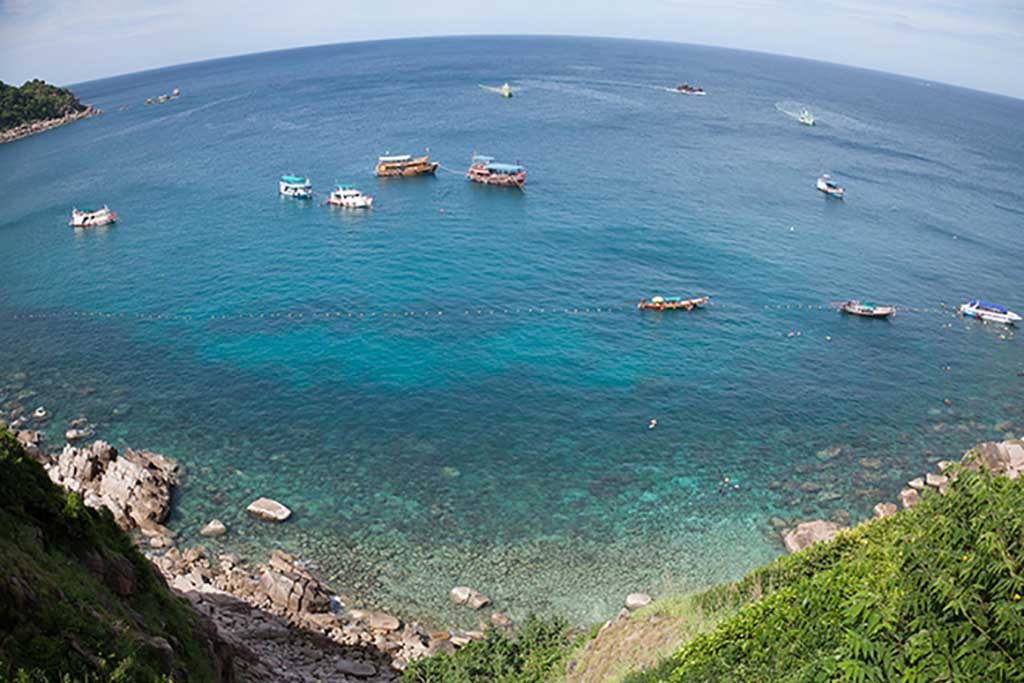
Koh Tao (Turtle Island), 45 km north of Koh Samui, is said to be the largest dive-training centre in Southeast Asia. Its plentiful reefs, rich marine life and excellent visibility have ensured that this divers’ “paradise” features in both guidebooks and resort developers’ sights. Compared to larger, more sophisticated Koh Samui, most of tiny (21 sq km) Koh Tao’s accommodation is more basic and mid-market — which suits its enthusiastic backpacker clientele — but the true attraction here is below the waterline. Even launching directly from the often-crowded beach you can easily reach good coral reefs.
Words and photographs © John Borthwick 2020

